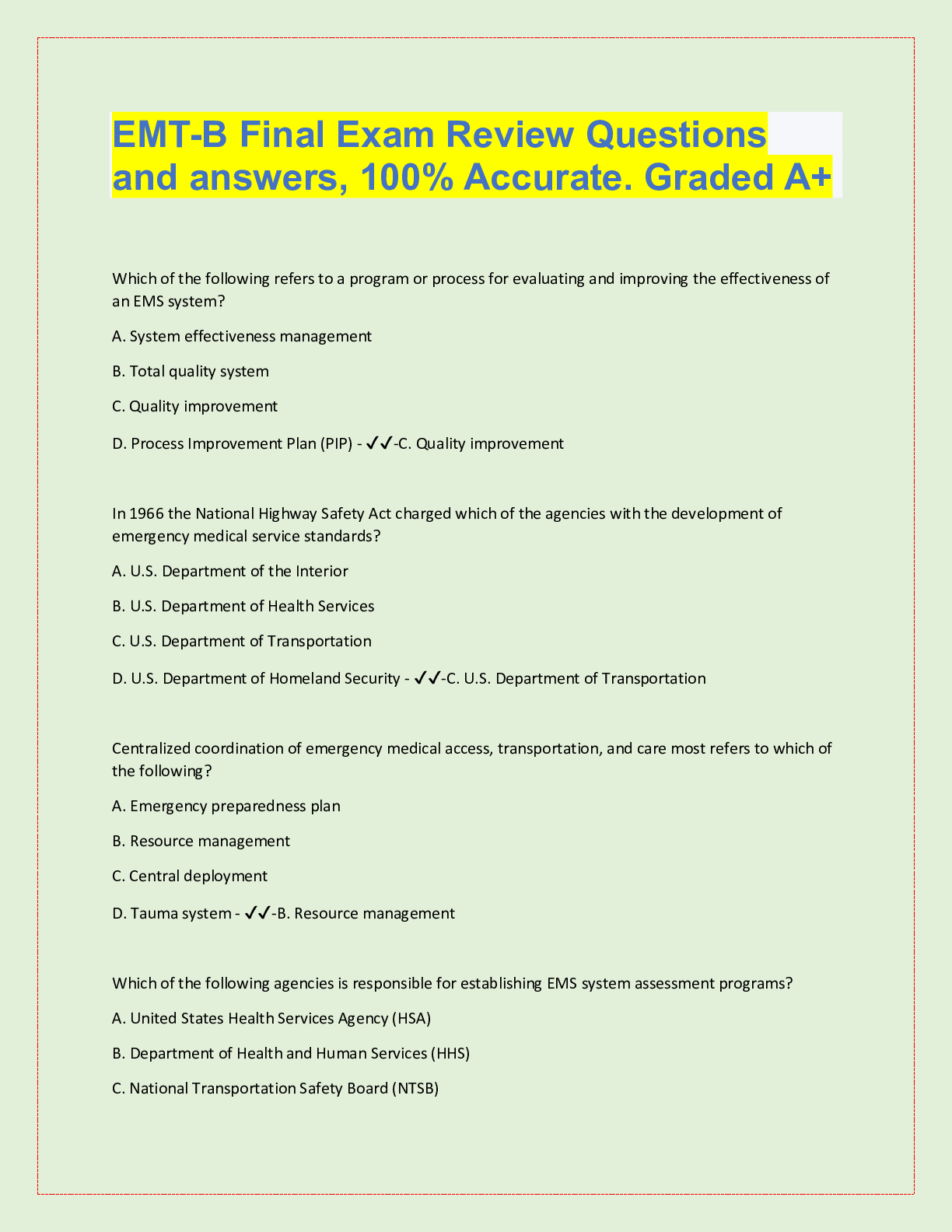Health Care > QUESTIONS & ANSWERS > AHA BLS Exam Review Latest 2021/2022(Graded A+) (All)
AHA BLS Exam Review Latest 2021/2022(Graded A+)
Document Content and Description Below
AHA BLS Exam Review Latest 2021/2022(Graded A+) 1. When should the rescuer initially ensure that the scene is safe? a. When the rescuer first sees a potential victim b. After the rescuer activates t... he emergency response system c. As emergency medical services arrive on the scene d. After an AED that is attached to the victim delivers a shock Correct Answer- A 2. As soon as an AED becomes available, which of the following is the first step the rescuer should perform to operate the AED? a. Place the AED pads on the chest b. Deliver 2 rescue breaths before using the AED c. Turn on the AED d. Complete 5 cycles of chest compressions Correct Answer- C 3. After the AED delivers a shock, the rescuer should a. Wait for the AED to reanalyze the rhythm b. Immediately restart CPR, beginning with chest compressions c. Provide 2 ventilations to the victim d. Immediately check the carotid pulse for no more than 10 seconds Correct Answer- B 4. The 2010 AHA Guidelines for CPR and ECC recommend that to identify cardiac arrest in an unresponsive victim with no breathing (or no normal breathing), a healthcare provider should check a pulse for no more than a. 25 seconds b. 10 seconds c. 15 seconds d. 20 seconds Correct Answer- B 5. After you identify an unresponsive victim with no breathing (or no normal breathing) and no pulse, chest compressions should be initiated within a. 25 seconds b. 10 seconds c. 30 seconds d. 60 seconds Correct Answer- B 6. Which of the following victims need CPR? a. A victim with a pulse and who is having trouble breathing b. A victim with chest pain and indigestion c. A victim who is unresponsive, no normal breathing and absent/ inadequate pulse d. A victim who is unresponsive but is breathing adequately Correct Answer- C 7. Where should the hands be placed to perform chest compressions on an adult? a. On the lower half of the breastbone b. In the center of the breastbone c. On the upper portion of the abdomen d. On the upper half of the breastbone Correct Answer- A 8. The depth of compressions for an adult victim should be at least a. 1 inch b. 2 inches c. 3 inches d. 4 inches Correct Answer- B 9. Why is it important to compress to the appropriate depth during CPR? a. Adequate depth of compression is needed to create blood flow during compressions b. Adequate depth of compression is needed to create air flow into the lungs and adequate oxygenation c. Adequate depth of compression is needed to prolong asystole d. Adequate depth of compression is needed to stimulate spontaneous respirations Correct Answer- A 10. The recommended rate for performing chest compressions for victims of all ages is a. At least 40 compressions per minute b. At least 60 compressions per minute c. At least 80 compressions per minute d. At least 100 compressions per minute Correct Answer- D 11. The compression-to-ventilation ratio for 1-rescuer adult CPR is a. 30:2 b. 5:1 c. 20:2 d. 15:2 Correct Answer- A 12. After the airway is opened, which of the following correctly states the proper technique for delivering mouth-to-mouth ventilation? a. The rescuer opens the airway, seals their mouth over the victim's mouth, pinches the victim's nose closed, and gives 2 breaths while watching for the chest to rise b. The rescuer opens the airway, seals their mouth over the victim's mouth, and gives several small puffs while trying to avoid making the chest rise c. The rescuer opens the airway, seals their mouth over the victim's mouth, and gives 1 slow breath for a duration of 5 seconds d. The rescuer opens the airway, seals their mouth over the victim's mouth, and gives 5 slow breaths, each with a duration of 2 seconds, while watching for the chest to rise Correct Answer- A 13. The rescuer knows the rescue breath for in infant victim is effective when a. The stomach visibly rises b. The chest rises visibly c. The child ventilation bag is completely compressed d. The rescuer can hear an air leak around the mask Correct Answer- B 14. Which of the following ventilation devices/techniques is not recommended for a single rescuer to provide breaths during CPR? a. Bag-mask device b. Mouth-to-barrier device technique c. Mouth-to-mouth technique d. Mouth-to-mask technique Correct Answer- A 15. During bag-mask ventilation, which of the following is r [Show More]
Last updated: 1 year ago
Preview 1 out of 14 pages

Reviews( 0 )
Document information
Connected school, study & course
About the document
Uploaded On
May 15, 2022
Number of pages
14
Written in
Additional information
This document has been written for:
Uploaded
May 15, 2022
Downloads
2
Views
820

.png)
.png)
.png)
.png)
.png)
.png)


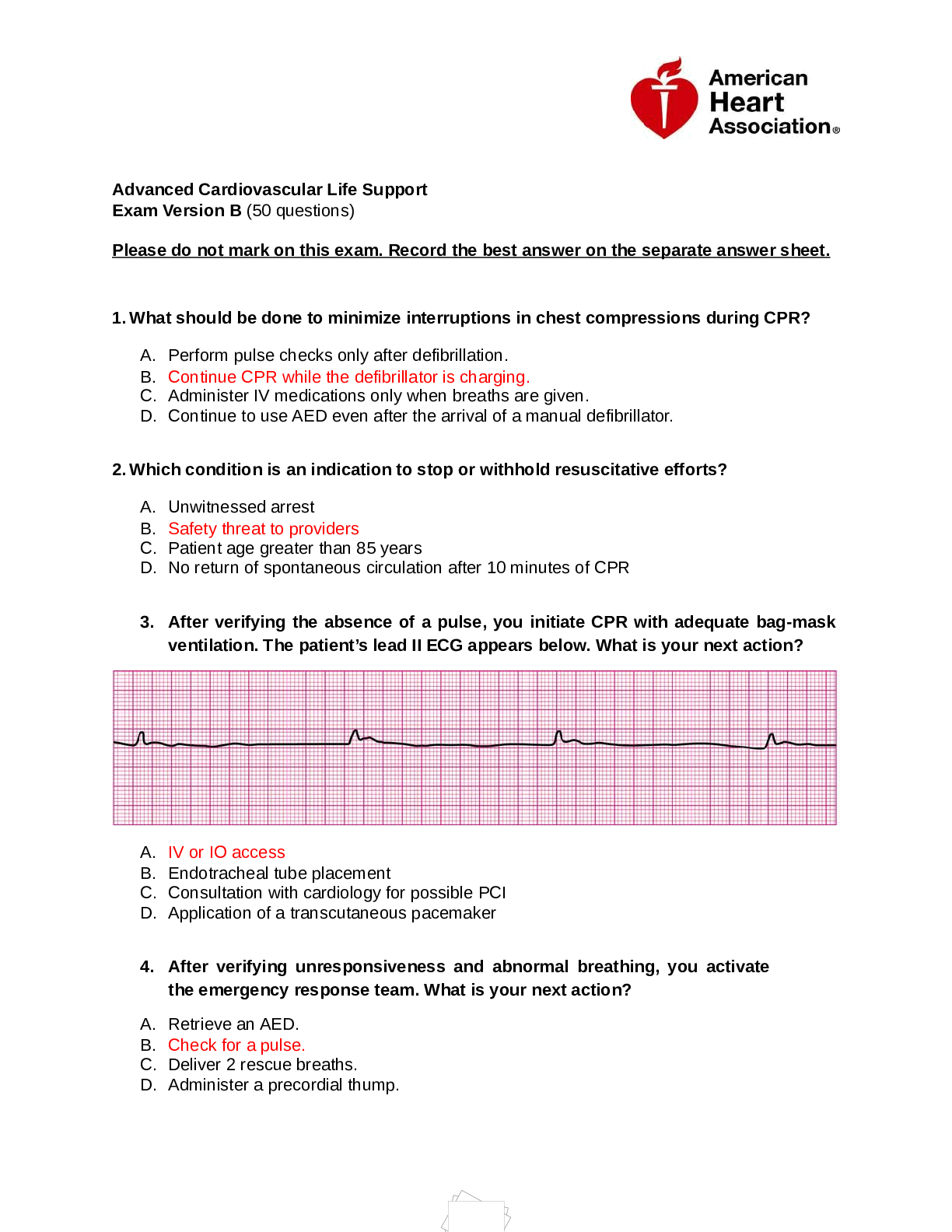


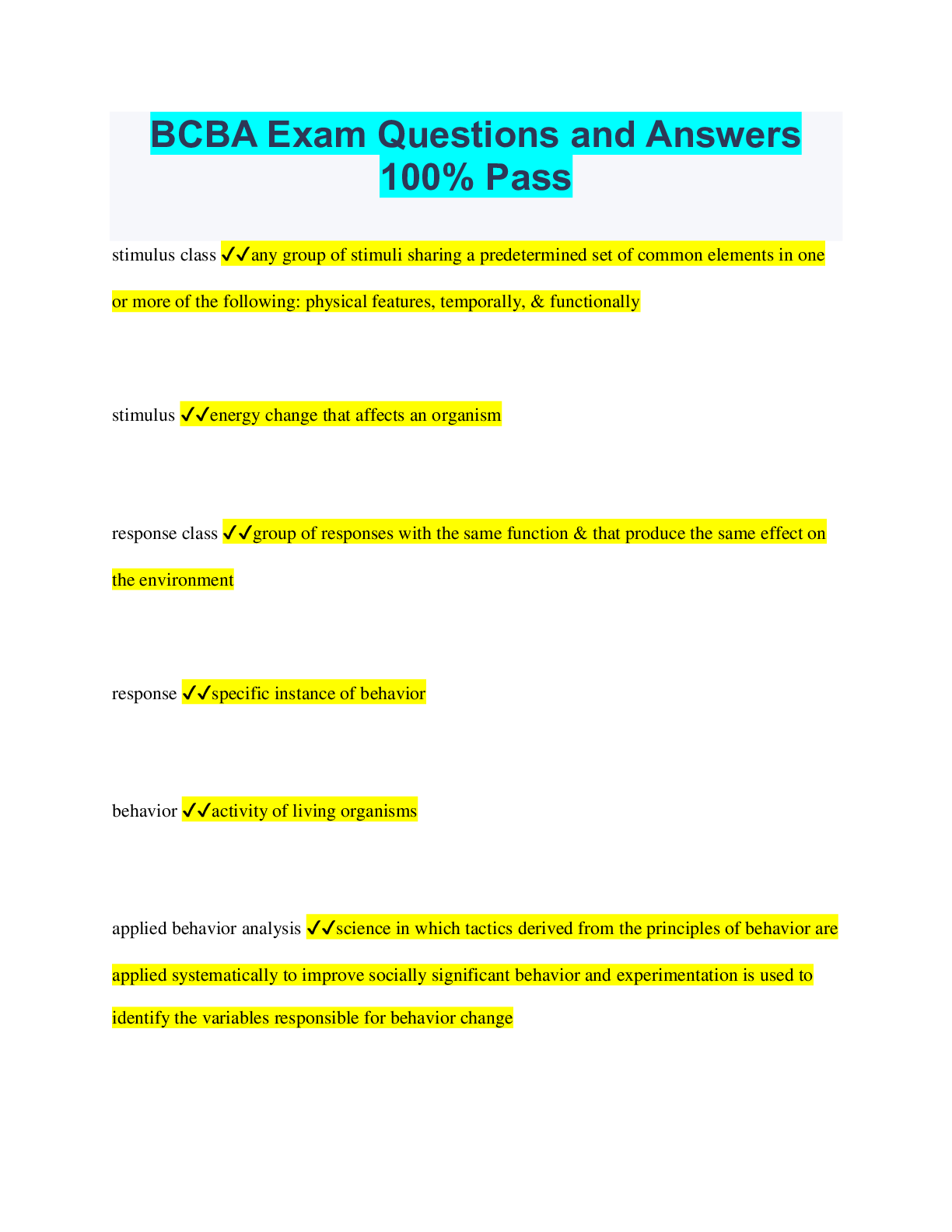
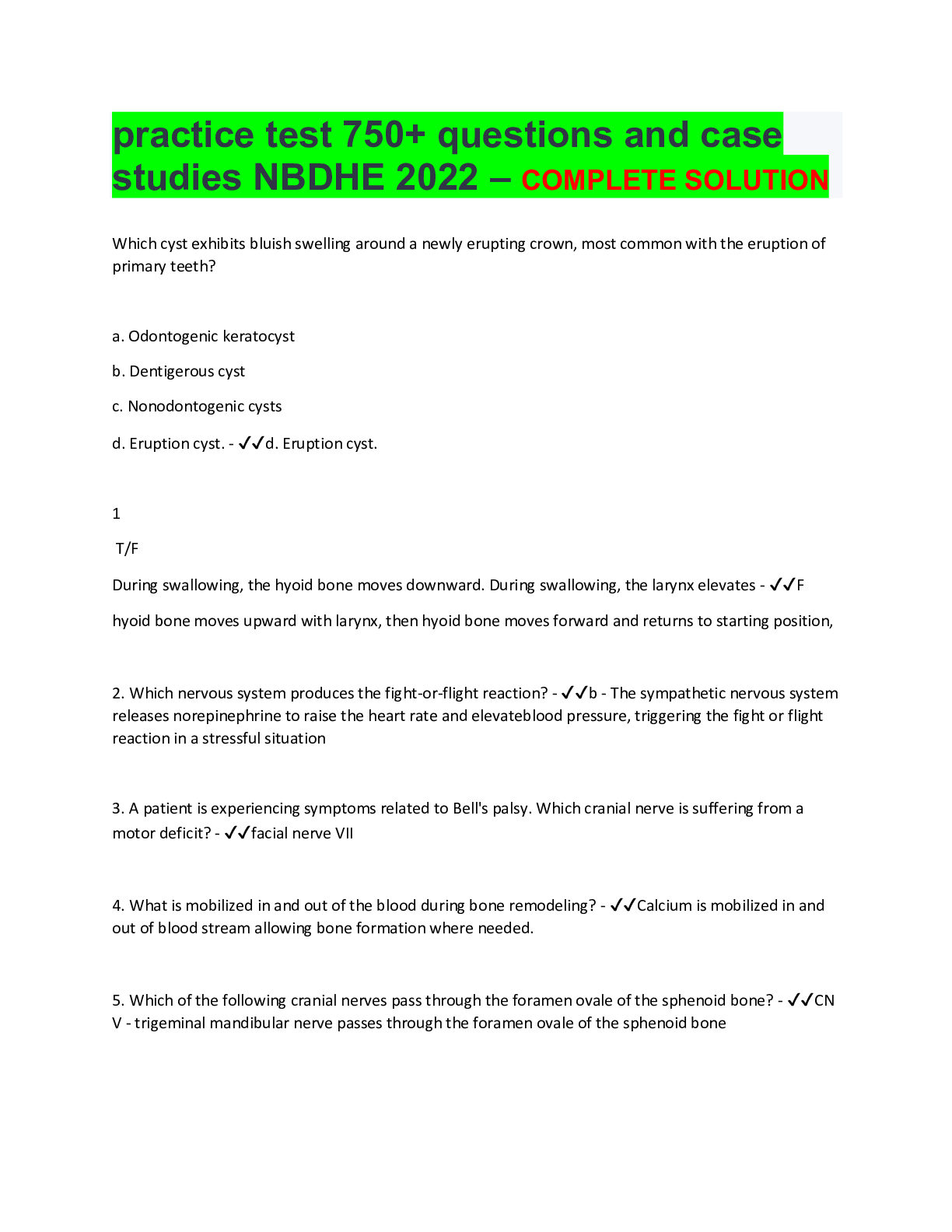
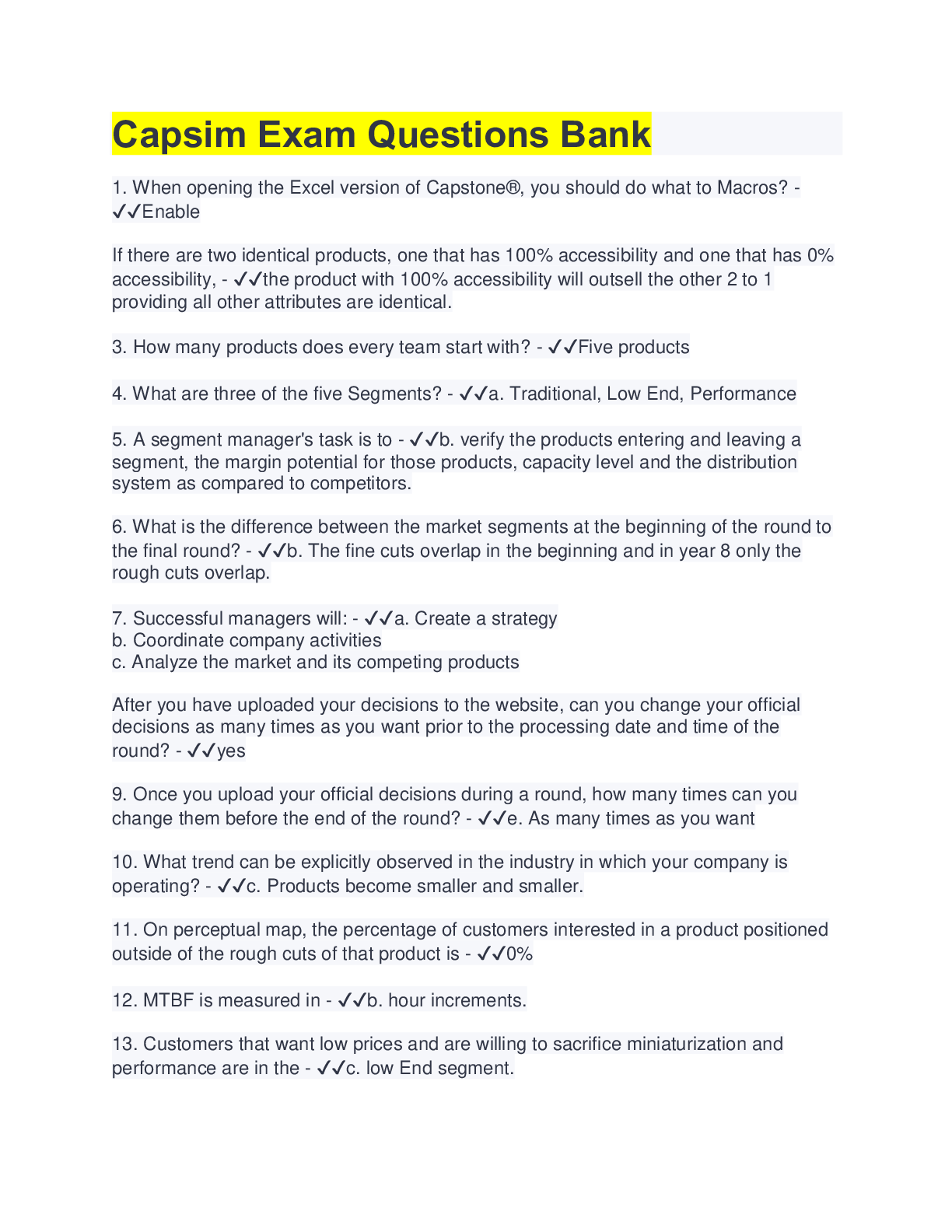
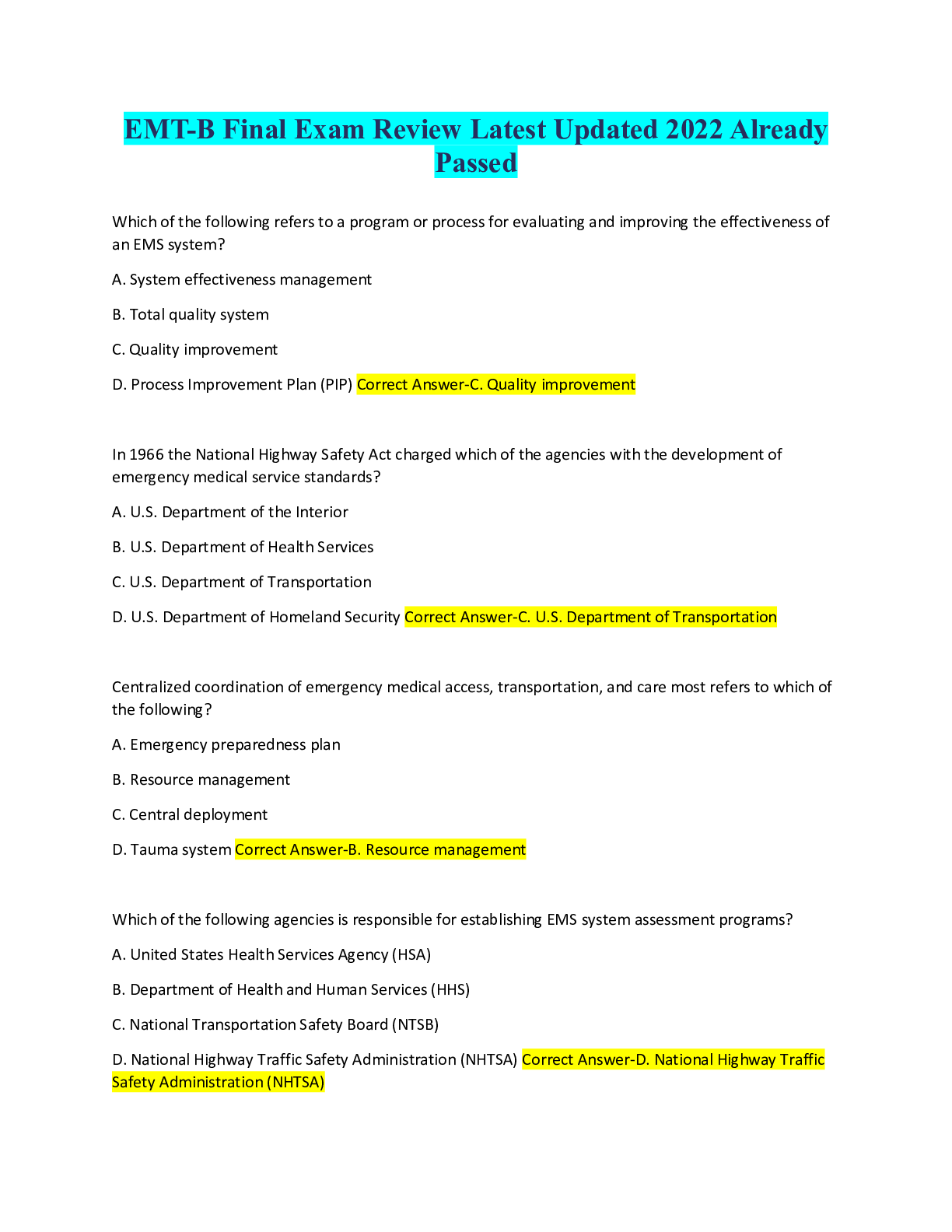


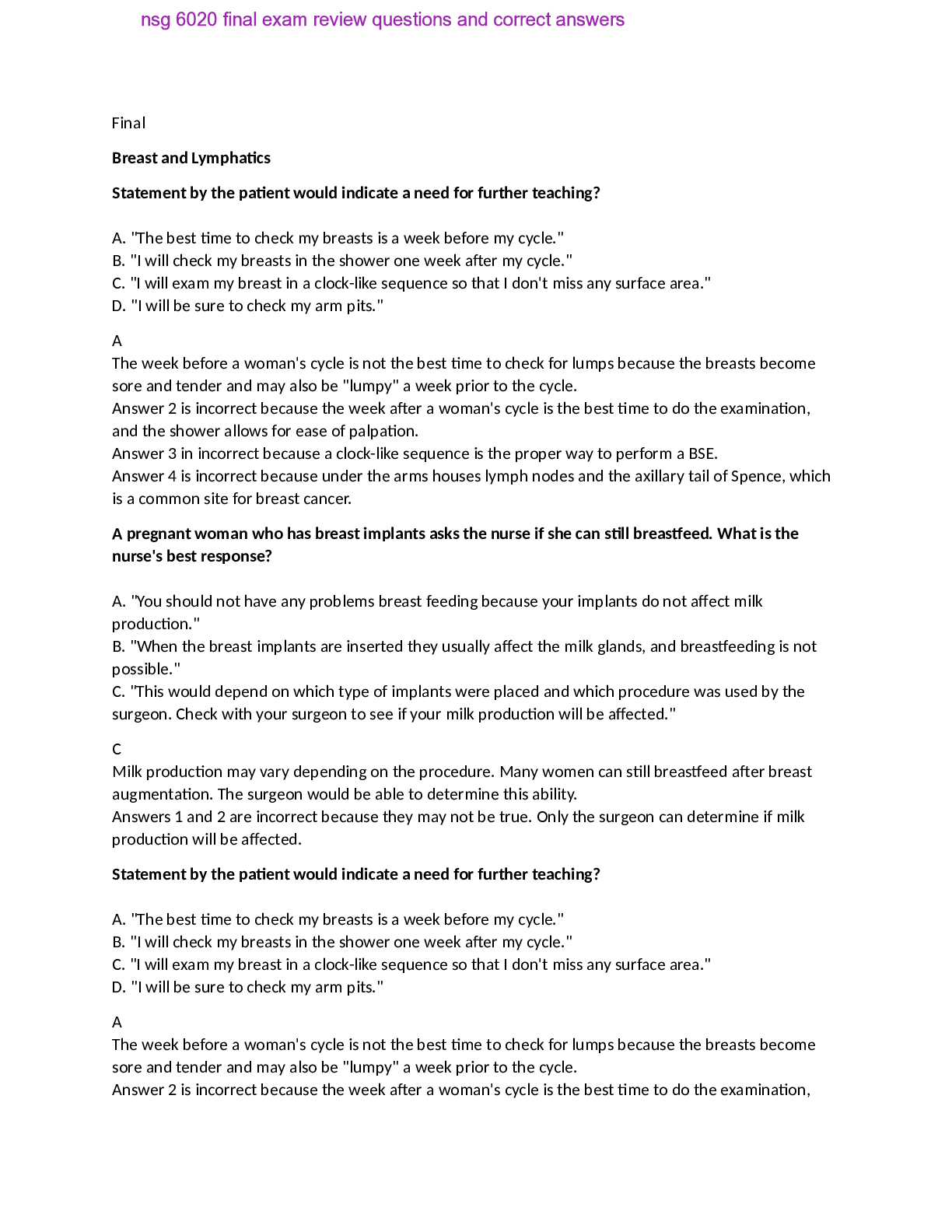
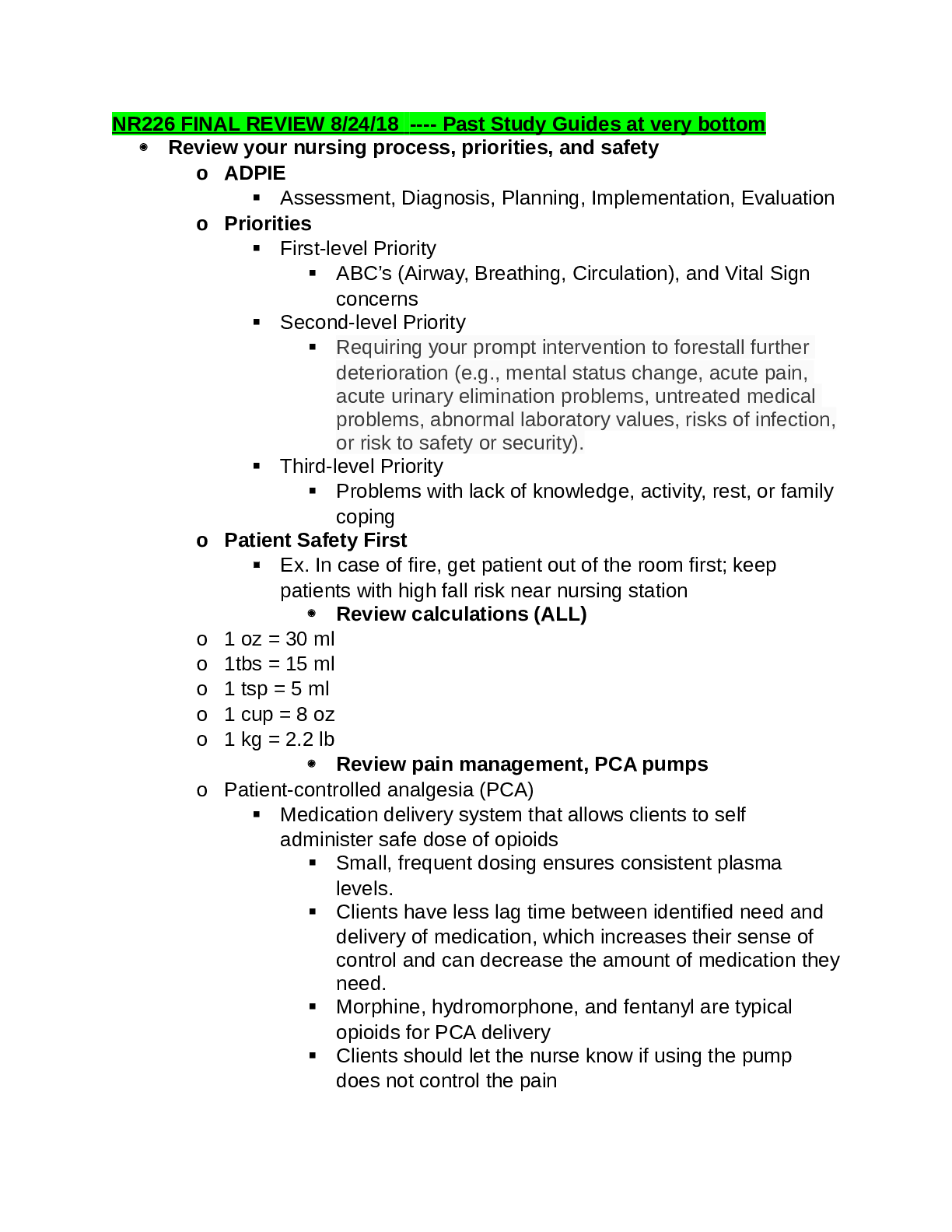
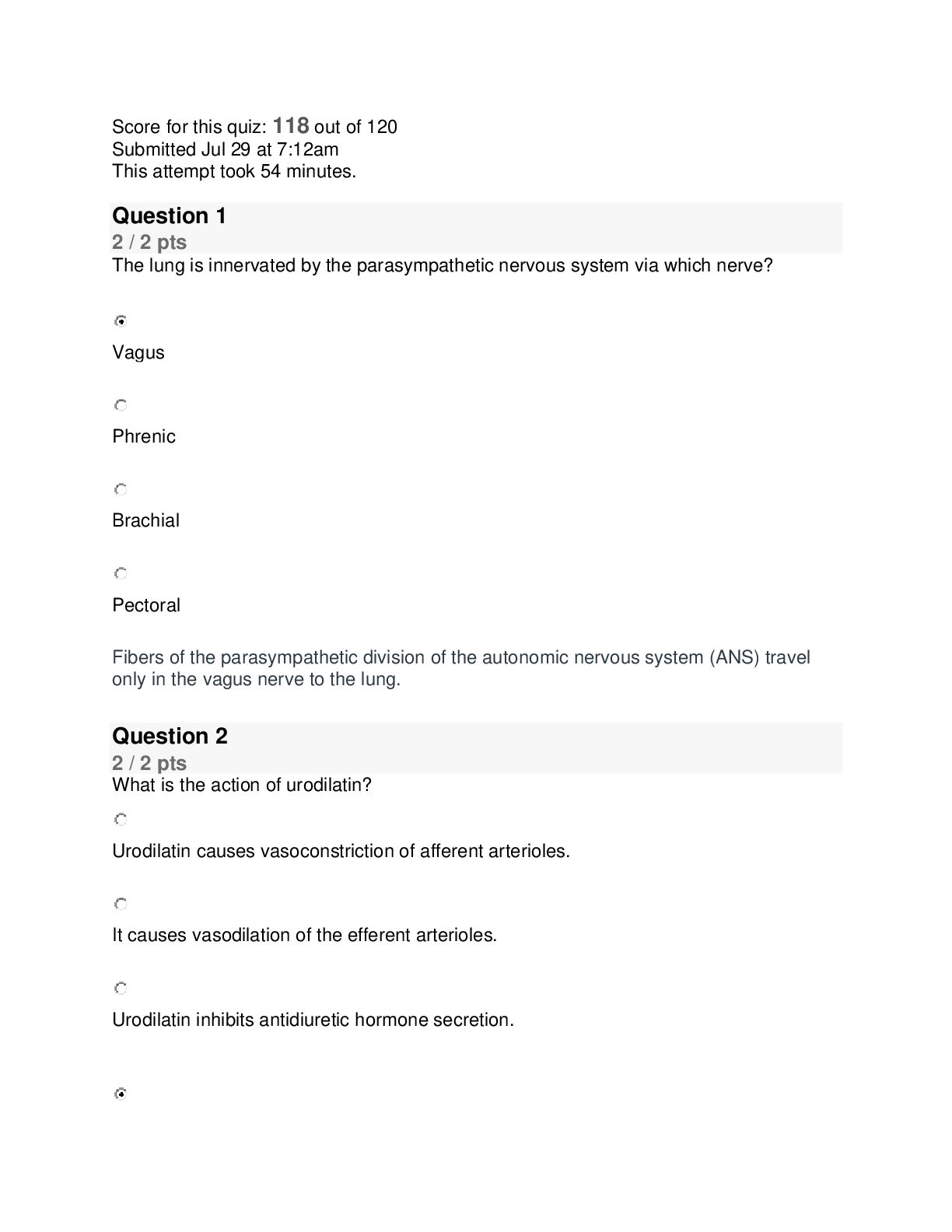
.png)
.png)
.png)
.png)
.png)
.png)
.png)
.png)
.png)
